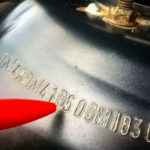The separation of the supporting structures of the building from the foundation, as well as the disposal of the elements of the support frame, is carried out by techniques corresponding to the materials of the cut structures.
A slice of stone walls begins with punching holes in the masonry for laying the beams of the parapherge of the frame of the frame. Punching is carried out either manually (by the gentry), or pneumatic drilling, or donors (perforators). In some cases, burning oxygen-acety-lan is used. The operation of the cut of stone walls is to break through the sections of their previously made holes and is carried out in the same ways as the holes, but most often by hand. Brick walls of the house moved in 1896. in Moscow, they were sawn out in 2 or 3 threads with telegraph wire.
Iron structures are cut off with hand or mechanical saws or cut off by an autoge.
When moving buildings, they are almost exclusively used by the type of direct rolling, since sliding gives a significantly greater friction force, and rolling on the axes causes difficulties in constructing carts. The use of carts is limited by cases of movement of small weight houses (up to 500 tons).
Rollers. The most rational form of rolling bodies for the purpose of moving buildings should be recognized as cylindrical rinks.
For the most part, rollers made of steel or cast iron with a diameter of 5 to 14 cm are used. With small pressure, hollow cylinders can be used instead of solid cylinders, for example, steam -wire steel pipes. The rollers are calculated for crushing in the places of their contact with the rolling surface according to the formulas of Hertz, and two cases of contacting can be found: 1) when rolling the rink along the rails and 2) when rolling the roller on the plane.
1. In the case of rolling a rink along the rail, theoretically, there is a touch at the point of two cylindrical bodies with axes directed perpendicular to each other. Due to the deformation of both cylinders, the pressure surface when designing it on the plane has the shape of an ellipse.
The strength of the rink in this case is determined from the formula:
Placement of rollers. When using running beams made of iron, they can be based on rollers either directly or through special shoes through special shoes. With wooden running beams, the use of shoes is mandatory.
Shoes are arranged either a rigid type, for example, in the form of a package of rails, or an elastic type, the design of which is most often composed of two steel plates 10-12 mm thick with a laying between them of oak or pine boards.
Shoes with groups of rollers under them are located mainly under the pieces, at the corners and adjacent of the walls to each other, and in the transverse walls – under the places of intersection with them of the lines of running beams. Columns are usually supported by two or four groups of rollers.
When moving, there is a gradual rolling of rollers from under the pillows and therefore it is necessary to immediately lay a new skating rink from the opposite side. The skating rink for each of its revolution lags behind the body to the length of the circumference.






